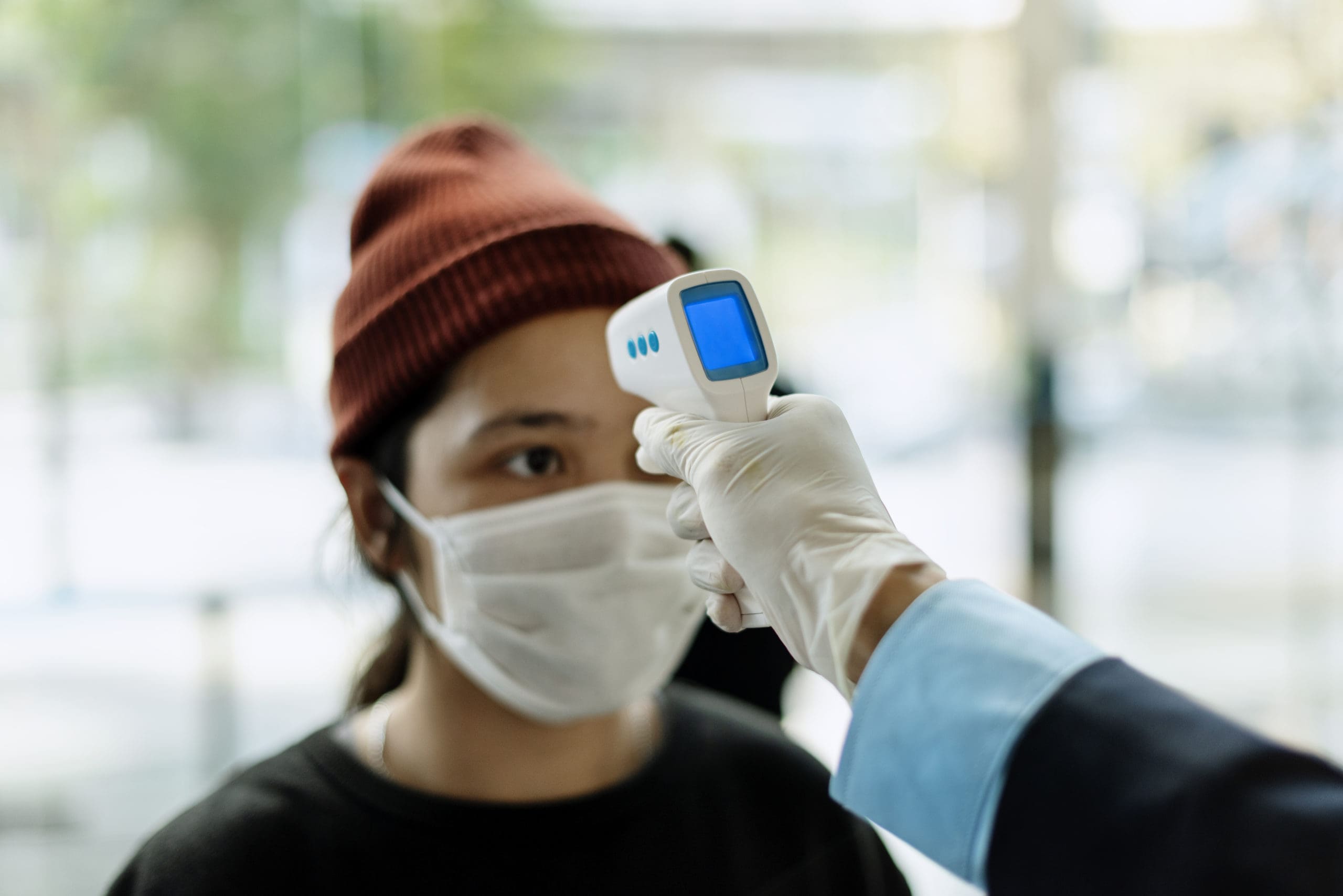Campuses could be forgiven for being confused by all of the new body temperature scanning systems that have gained prominence in response to the coronavirus. In fact, this market might seem like it’s the Wild West to some.
Body temperature scanning technology isn’t new, but it’s burgeoning importance is. So which systems are appropriate for your organization?
Understand the Differences Between Body Temp Technologies
This is a complicated category of products with major differences between systems, says Bill Parrish, CEO of SeekThermal.
According to Parrish, skin and body temperature scanning systems can be broken down into three categories:
- Least-expensive tier: systems that use thermopiles, or single-pixel detectors, which look at small areas of a forehead or face and reads the average skin temperature and tries to relate it to body temperature. It’s very inexpensive, but users must be very close to it for accuracy, which is a problem from both ADA and physical distancing standpoints.
- Medium tier: systems that use microbolometer arrays, a ~100,000-pixel array, which reads a smaller area of the skin but “sees” the entire face. It measures skin temperature, paying close attention to areas around the eyes, to gain an accurate picture in a short amount of time.
- Most-expensive tier: walk-by or group systems, which purport to read an entire room full of people.
Approach Walk-by Systems with Caution
Parrish says he approaches the most-expensive tier of body temperature scanning solutions with a healthy dose of skepticism.
[promo_content slug=”csos-2020-on-demand-campus-reopening-promo”]
“Distance is a big deal; you generally need a system to tell people to walk up to a specific distance from a camera,” he says. “Otherwise, you need a system that can tell exactly how far away a person is before reading their temperature, which requires extraordinarily high pixel and AI capabilities.”
Skin Temperature Is Not Body Temperature
If someone rides to work on a bike in a snow storm, their skin will be cold. In a hot place, it will be hot. Body temperature is more of an indication of sickness than skin temperature.
In terms of using this technology to combat the spread of viruses like COVID-19, campus officials must remember that over the course of a 14-day incubation period, an infected person may not produce an abnormal temperature.
“I do believe that organizations must take into account that temperature sensors, cameras and AI-driven systems are tools only and not an ultimate solution to an ethical debate that would solve everything,” says Florent Hediard, Global Marketing Manager at Navori. “That said, organizations can leverage these tools to comply with an obligation of diligence. Based on these considerations, [organizations] should select an application that enables the addition of many technologies within one open system.”
Accurate Body Temperature Scanning Systems Read the Campthus
“The campthus, near the eye, is a better indication for body temperature than a random spot on the forehead, meaning that’s a better area for these systems to search,” Parrish says.
But in order to measure that area, you need a camera with the resolution that can actually see and identify it.
Combine Temp Scan Tech with Building Management Systems
Jay Leedy, director of business development for Diversified’s Digital Media Group, says organizations should consider down-stream functionality that deliver long-term value versus a one-trick pony.
“Temperature check solutions should have an ability to deliver integration into a range of third party systems through devices that also maintain the [organization’s] expectations for meeting data security requirements.”
Many of these systems have an adaptive offset, which averages the skin temperature of those it measures to come up with an appropriate average. If a person slightly above that temperature is read, an alert is sent to building management.
But these alerts can activate other, non-virus-related functions, too.
Be Mindful of Privacy Concerns
Privacy can be a challenging concept when it comes to security and public safety. Borders, customs, passports and fingerprint collections exist for a purpose.
“We can consider these relevant when it concerns national security. However, when we talk about private/commercial use, it is critical to consider how this data is stored (or not),” Hediard says. “That is especially true if the technology by itself can identify each person, and if individual databases are shared. People must be informed upfront if they are filmed or scanned, and personal privacy must be guaranteed with strict rules, such as GDPR (General Data Protection Regulation) in Europe.”
Laura Davis-Taylor, Chief Strategy Officer at InReality, says body temperature scanning systems are not a concern from a Health Insurance Portability and Accountability Act (HIPPA) perspective because they’re not a medical diagnostic.
“However, we recommend any business using them have a process, workflows and data storage tied to a data and privacy policy, and have clear communication on what they are doing, why and how the information is being used.
“The government policies are still shaping up around all of this, but at this time, the Equal Employment Opportunity Commission (EEOC) has confirmed that, during the pandemic, employers may take temperatures prior to office entry and ask COVID-19 related health questions due to the direct threat that the pandemic poses to employee health and safety.”
For K-12 schools, the Centers for Disease Control and Prevention recommends that before sharing personally identifiable information on students concerning COVID-19, consider Federal, state, and local requirements, including provisions in the Family Educational Rights and Privacy Act (FERPA).
Adam Forziati is senior web editor for CS sister publications Commercial Integrator and MyTechDecisions. This article originally ran in Commercial Integrator and has been edited.













